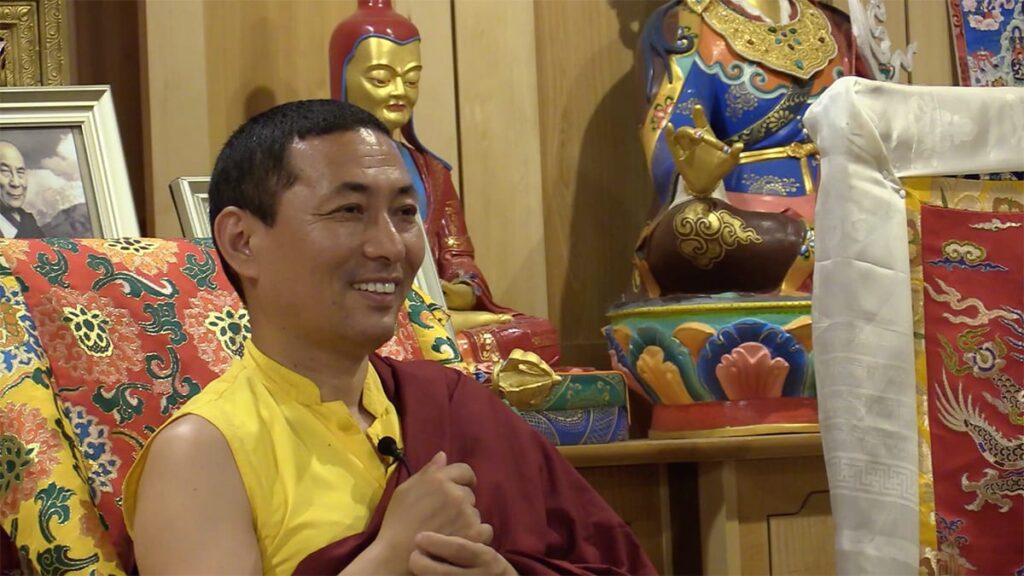“Meditation training with focus” takes many forms. As we begin to build a habit of mindfulness, we can use one or more of these techniques. For example, in a meditation session or sometime in our day, we may focus our attention lightly on a sound. How so? We simply rest our mind on the sound of our choice. Then, when we notice that our mind has wandered away, we gently guide it back to the sound. That’s all there is to it–bringing our mind back to the object of focus again and again. We call that process “mindfulness”. In this video teaching, Tulku Migmar Tsering advises us on how we can use meditation training with a focus to cultivate a habit of mindfulness.
The teaching is in Tibetan with translation into English.
Meditation Training with Focus: Many Choices
We just looked at using sound as our object of focus. Alternatively, we could choose to focus on the breath. But here again, we have many options for how we train. Some people focus on the inhalation of breath. Others focus on the exhalation. Both are fine! And we can also focus on the entire cycle of the breath–including the pause between the breath.
Buddhists often use the mentally created sound of a mantra as an object. We could also choose to focus on a conceptual thought such as kindness or compassion as the resting place for our mind. While there are many different possible focuses, the method always remains the same. We choose one resting place and direct our mind to remain there. And when it drifts away, as it will, we gently begin again.
Why Do We Need Meditation Training with Focus?
These days we can find ourselves very distracted and busy. This busyness prevents us from paying attention to our minds–leading to the proliferation of negative emotions. How often do we notice that people seem unhappy and
emotional these days? Negative emotions create suffering for ourselves–and create suffering for others as well. For example, if we attach or cling to something tightly, it will cause us problems and take away our peacefulness.

Tulku uses the example of holding onto a knife blade in your hand very tightly. If you close your hand around the blade, and when someone tries to take it away from you, what will happen? You’ll cut your hand, right? Instead, if you hold the blade more gently and then let go, you reduce the risk.
In the same way, when we cling tightly to anything–people objects, places, etc.–what happens when we lose them? We experience suffering and pain, don’t we? But if we don’t cling so strongly, then when we lose something we don’t suffer to the same extent. Letting go allows us to take a loss more lightly.
However, we’re not cultivating numbness or apathy. We can still enjoy people and experiences and care for those around us. But we acknowledge that people and situations and physical objects are constantly changing or shifting. With that understanding, we don’t expect everything to remain constant–we can go with the flow as shifts occur. These meditation techniques help us train the mind to hold more gently and let go more easily.
Meditation Training in Mindfulness Loosens Bad Habits
Meditation training methods help us to loosen our clinging. When an emotion comes up in our mind, we don’t grasp or cling to it. We don’t follow after anger or jealousy or other painful emotions. Instead, we bring our mind back to our object of focus–an image, a sound, our breath, etc. This is the type of mindfulness we are aiming for as we create healthier habits. These healthier habits will bring us greater mental comfort and happiness.
For more on this topic, follow other posts in this series at Mental Maintenance Creates Stability and at Cultivating New Habits for Busy Minds.










Responses